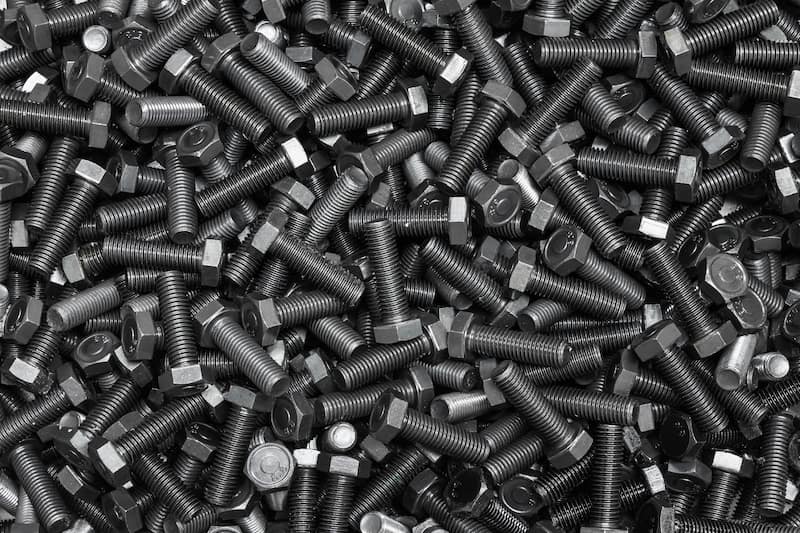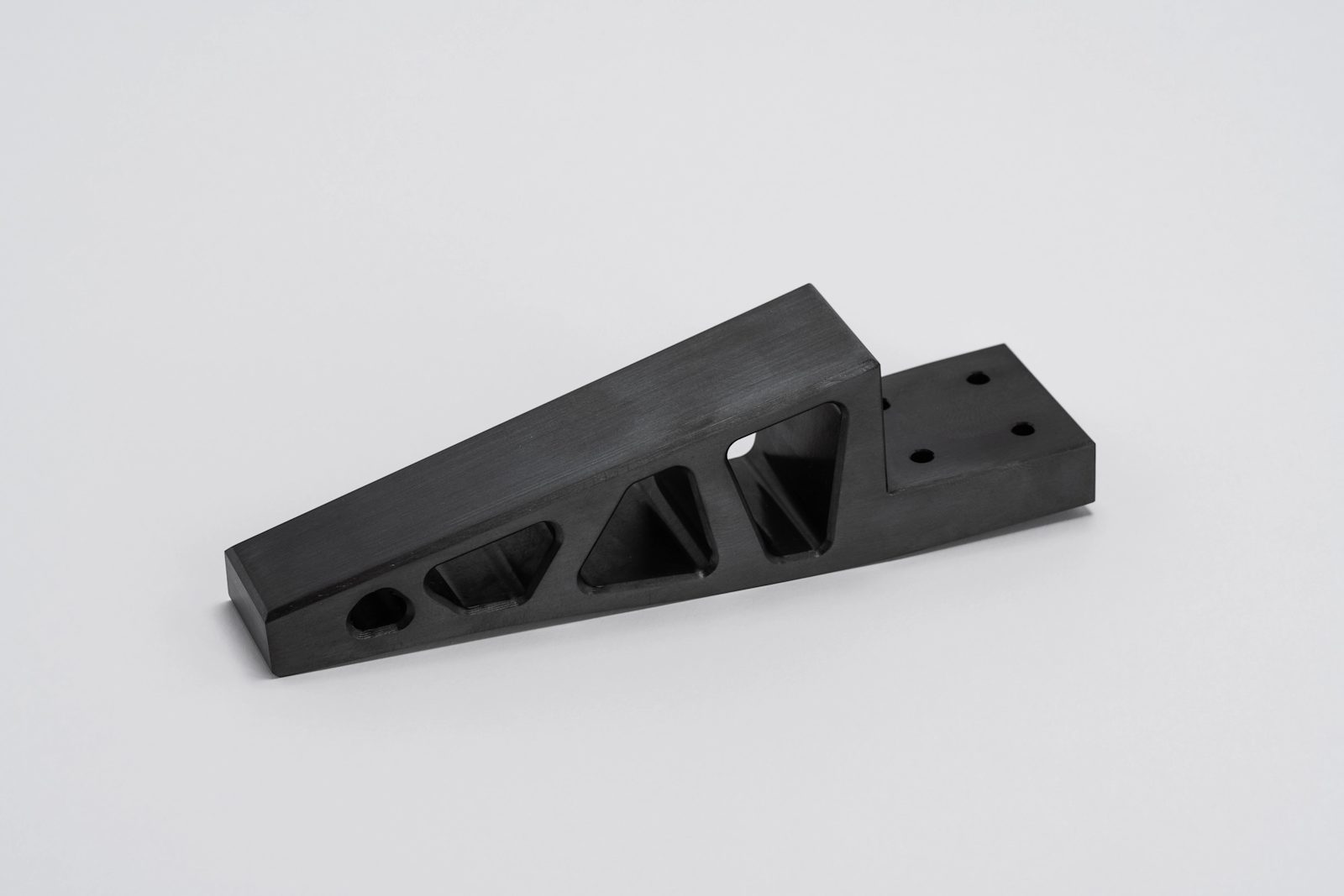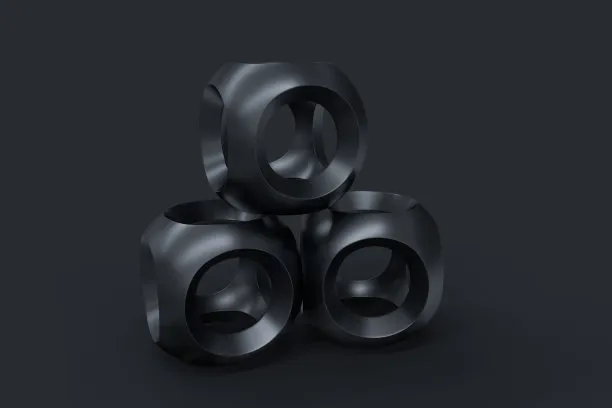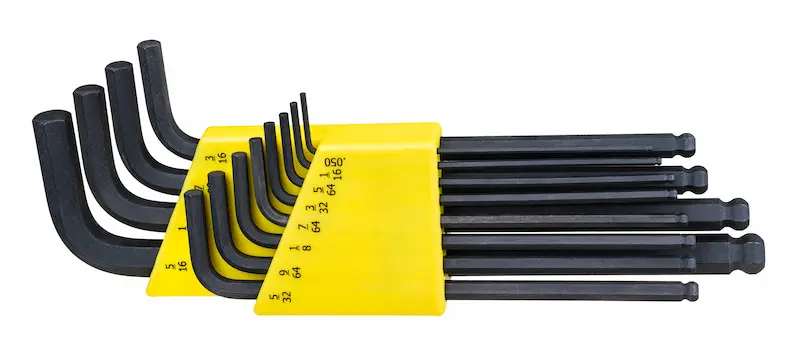
The chemical conversion coating known black oxide is frequently employed on ferrous metals including iron, steel, & stainless steel. No new material is applied on the surface during this operation, in contrast with electroplating or painting. Instead, it transforms the metal's outermost coating into magnetite (Fe₃O₄) , a substance that gives the outermost layer a consistent matte black appearance. In spite of lowering light reflection while improving appearance, this coating offers modest corrosion resistance, particularly when paired with other oils or waxes.
Black oxide is highly sought after in industrial manufacturing as it may improve surface durability without affecting dimensional tolerances. due to its affordability, protective qualities, & minimum influence on surface dimensions, it is a common choice for machine components, cutting tools, fasteners, & guns. The method is popular in many high-demand industrial industries since it is simple to regulate, cost-effective for large-scale manufacturing, and works well with post-treatments.
The history of black oxide treatment begins in ancient metallurgy, when blacksmiths found that heating iron beneath particular circumstances resulted in a blackened surface which was more resistant to corrosion. The main objective of this rudimentary oxide coating was to improve the lifespan and aesthetics of tools and weapons.
Controlled black oxide methods emerged as a result of scientific understanding of oxidation & metallurgy during the late 19th and beginning of the 20th centuries. In the firearms business, the process, which was referred to as "bluing" at the time, was one of the initial industrial uses, helping to lessen rust and glare. Hot, mid-temperature, and cold-temperature black oxide are the three primary techniques that emerged from the standardization & optimization of black oxide coating as technology progressed. These advances have made it possible to create coatings that are more uniform, work with a variety of alloys, and enhance surface performance. Black oxide surface treatment remains a reliable technique in both mass production & high-precision engineering contexts today.

One kind of chemical conversion coating that changes ferrous metal surfaces at the level of molecules is black oxide coating. This method chemically transforms the metal's topmost layer into magnetite (Fe₃O₄) , a black iron oxide with protective & aesthetic characteristics, in contrast to coatings that apply an additional layer of substance.
Iron (Fe) undergoes a controlled process of oxidation with potent oxidizing chemicals to produce magnetite (Fe₃O₄) , that makes up the black oxide layer. The resultant layer typically ranges between 0.5 and 1.5 microns and it is chemically linked to the substrate. Precision components' dimensional integrity remains intact since the coating doesn't separate or flake off under stress since it is a conversion layer instead of an applied film.

Three major steps typically take place in the black oxide process:
The outcome is in a smooth, matte black coating that improves lubrication in moving components, lowers glare, & offers some corrosion protection. Without jeopardizing crucial tolerances, the coating additionally renders tools & machined parts more resistant to wear.

Each of the three primary black oxide coating process types hot, mid-temperature, & cold has unique characteristics and applications. The application, needed performance, as well as operational constraints all influence the approach selection.
This is the most reliable and widely utilized approach. It means immersing ferrous metal components in an ordered series of tanks filled with alkaline salt solutions, typically at temperatures between 140 – 145°C (284 – 293°F). Sodium hydroxide, sodium nitrate, & sodium nitrite are the main components in the bath.
A thick coating of magnetite (Fe₃O₄) grows on the metal's surface during immersion. A heavy, corrosion-resistant coating that bonds tightly to the underlying material can be generated by this method. It provides a non-reflective, deep black finish. For better longevity, pieces are cleaned after blackening and afterwards sealed in a wax or oil that inhibits corrosion.
Designed as a more secure and energy-efficient substitute, the procedure runs between 100°C — 120°C (212°F — 248°F). Lower working temperatures are rendered possible by enhanced formulations, yet the fundamental chemistry is exactly the same as with the hot technique.
A comparable magnetite layer with high corrosion resistance & aesthetics may be produced with mid-temperature black oxide, nevertheless the film may be a little thinner than that produced with hot techniques.
A simpler method that requires no heating is cold black oxide, additionally referred to as room-temperature blackening. The method forms a copper-selenide molecule on the metal's surface in place of a magnetite layer.
The cold handle is less robust with little corrosion protection unless it is extensively sealed with oil or wax, even though it seems like hot black oxide.
From general ornamental applications (cold technique) to highly accurate tools and weapons (hot method), all one of these black oxide technologies fulfills distinct industrial demands. Getting optimal performance needs careful selection & post-treatment.

However modified versions of the technique may be applied to certain non-ferrous materials, black oxide coating performs best on ferrous metals. It is essential to understand material compatibility so as to guarantee the coating's appropriate compliance, durability, plus functioning.
Initially developed for ferrous materials, the black oxide method continues to be most appropriate for:
After treatment, these metals produce a magnetite (Fe₃O₄) surface that, after sealed, becomes chemically linked & stable.
Although not being designed specifically for non-ferrous materials, black oxide can be used for the applications that follow using customized blackening solutions:
To ensure good coating performance & visual homogeneity, it is necessary to apply appropriate chemical and manufacturing parameters specific to each kind of metal.
Black oxide coatings are extremely beneficial for businesses and industries as they provide an exceptional combination of cost-effectiveness, aesthetic appeal, and functionality. The primary advantages are listed in detail below:

Black oxide's capability to boost corrosion resistance is one of its primary benefits. The magnetite layer alone provides a moderate level of protection, but since it is porous, it can be used as a storage container for sealants like lacquer, wax, or oil. The resulting substance creates an enclosure against the contact with chemicals, oxygen, & moisture when it is correctly sealed. Although it lacks the outstanding corrosion resistance of coatings including anodizing or zinc plating, it is suitable for indoor or slightly corrosive conditions, particularly in tools & mechanical components.
A deeply matte black exterior that is homogeneous & non-reflective is imparted using black oxide. In sectors wherever surface appearance & glare reduction are crucial, such as aerospace, defense, automotive, as well as tooling, this finish is highly sought after. Since black oxide is an integral part of the metal itself, it doesn't chip or flake off as painted finishes do. This provides a polished, polished look that additionally assists in concealing small surface flaws.
The black oxide process has no effect on the dimensions of the part since it produces a very thin converting layer, typically 0.5 to 1.5 microns. For intricate components like threads, mating surfaces, as well as assemblies having tight tolerance, this makes it perfect.
Black oxide is considerably less expensive than other metal finishing methods like electroplating, powder coating, or PVD (Physical Vapor Deposition). The process entails less post-processing, less labor, as well as lower material prices. In addition, automated lines may be utilized to apply black oxide in bulk, boosting throughput for long manufacturing runs. Processing time and money are further decreased by processing components without requiring costly masking or complex setup.
Although black oxide coating has numerous advantages, it additionally comes with drawbacks. In order to be sure the coating has been applied correctly for the purpose it was designed for, engineers, producers, & product designers must be cognizant of these limitations.
Black oxide resists corrosion to a slight degree, particularly if sealed with wax or oil. Yet, compared to coatings such zinc plating, anodizing, or ceramic coatings, the durability is much poorer in severe or extremely corrosive situations, such as that found in ships, offshore, or chemically exposed areas. Given the magnetite layer's porous nature, moisture & impurities can seep through the coating & cause the metal that is underneath to rust if the coating is not correctly sealed & preserved.
Steel, iron, & stainless steel are instances of ferrous metals whereby black oxide is mainly intended. While there are modified blackening solutions for copper because of its alloys, their shielding is limited since they cannot generate a real magnetite layer. Zinc, magnesium, & aluminum are unable to be treated with black oxide using traditional methods. Rapid deterioration, uneven pigmentation, & poor adherence could occur from applying the coating to materials that are not appropriate.
On black oxide coating has to be appropriately sealed and kept clean on a regular basis to maintain its aesthetic & protective qualities. Over time, friction, heat, plus exposure to the environment might trigger the oil or wax which was utilized for filling the porous layer to deteriorate.
Due to its ability to mix price, functionality, with aesthetics, black oxide coating has become vital in a variety of industrial areas. It is ideal for many kinds of applications in the automotive, aerospace, tooling, plus electronics industries due to its ability to improve surface appearance, offer mild protection, & maintain precise tolerances.
Black oxide coating is frequently applied to metal fasteners, bolts, brackets, bushings, gears, & shaft components in the automobile industry. Such parts frequently require surface protection without compromising mechanical performance or dimensional precision.

The coating assists in:
Additionally, considering automobile manufacture is primarily reliant on automation as well as cost effectiveness, black oxide is an ideal surface cure for high-volume production because of its batch processing ability as well as low material consumption.
Black oxide coating serves particular functions in aircraft applications where accuracy, weight, as well as dependability are crucial. These advantages include lowering glare, prolonging component life, and offer surface protection without altering important part dimensions.

Aircraft components such as:
They are frequently subjected to black oxide treatments when operational conditions allow. The non-reflective treatment minimizes visual distractions from instrument panels or shiny sections in the cockpit or instrumentation regions when under sunshine.
Yet, the coating's application is typically restricted to non-exterior components or parts that are subsequently sealed or kept in controlled conditions due to its moderate resistance to corrosion. Higher-performance coatings, including hard anodizing or cadmium plating, are advised for external aircraft parts or critical flying components.
One of the areas that uses black oxide most frequently is tool manufacture, particularly for:

The coating delivers a number of beneficial advantages:
Increased resistance to wear: Under mechanical stress, the hardened outer layer and ongoing lubrication minimize wear on the surface.
Improved handling & grip: Especially for handheld instruments, the matte texture reduces slippage.
Protection against corrosion: Despite frequent use, black oxide-coated tools can withstand rust expansion if they are kept clean properly and greased on a regular basis.
Improved appearance: Instruments with a consistent black finish appear more expensive and more expert, which raises the value of the brand.
For tools that need precise tolerances, black oxide can be especially useful because it adds barely any thickness therefore eliminates the requirement for post-treatment machining.
Black oxide is a cost-effective surface treatment for ferrous metals, offering a balance of corrosion resistance, dimensional stability, and aesthetics. When paired with oil or wax sealants, it forms a thin magnetite (Fe₃O₄) layer that protects the surface without affecting part tolerances—ideal for precision tools, assemblies, and components.
Its non-reflective finish, low cost, and modest protection make it suitable for applications in automotive, aerospace, military, and tooling industries. However, it’s less effective in highly corrosive or outdoor environments and requires proper maintenance to retain performance.When applied correctly, black oxide enhances both appearance and longevity—making it a smart, scalable finishing choice for steel and stainless steel parts.
At Apex Rapid, we offer reliable black oxide finishing services tailored for CNC-machined components. Contact us today to learn how we can support your project.
